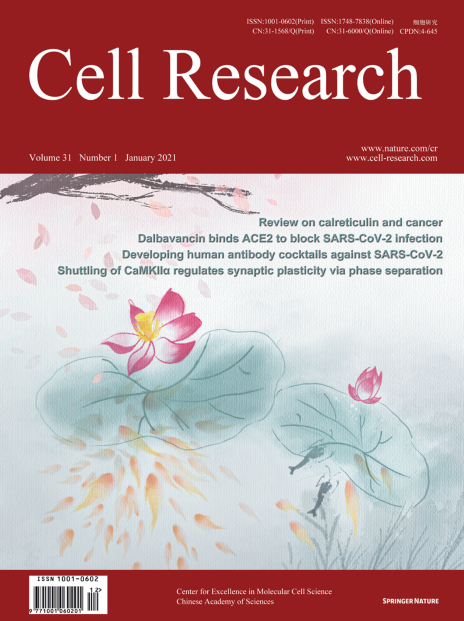
Advanced Search
Submit Manuscript
Advanced Search
Submit Manuscript
Volume 31, No 1, Jan 2021
ISSN: 1001-0602
EISSN: 1748-7838 2018
impact factor 17.848*
(Clarivate Analytics, 2019)
Volume 31 Issue 1, January 2021: 94-97 |
N6-methyladenine is incorporated into mammalian genome by DNA polymerase
Xiaoling Liu1,† , Weiyi Lai1,† , Yao Li1,2,† , Shaokun Chen2 , Baodong Liu1 , Ning Zhang1 , Jiezhen Mo1,2 , Cong Lyu1,2 , Jing Zheng1,2 , Ya-Rui Du3 , Guibin Jiang1 , Guo-Liang Xu3 , Hailin Wang1,2,4,*
1State Key Laboratory of Environmental Chemistry and Ecotoxicology, Research Center for Eco-Environmental Sciences, Chinese Academy of Sciences, Beijing 100085, China;Dear Editor,
DNA N6-methyladenine (6mA), one of the most prevalent epigenetic base modifications in prokaryotes,1 is recently found in multicellular eukaryotes.2,3,4,5,6,7,8 This nucleobase may have epigenetic roles in regulation of retrotransposons, chromatin organization, and so on.2,3,4,5,6,7,8 However, both our group9 and Greer’s group10 noticed that eukaryotic DNA is easily contaminated with a minute of bacterial DNA, which carries overwhelmingly abundant 6mA (~2% 6mA/dA).1 This brings great challenges for accurate detection of DNA 6mA in eukaryotes in terms of both sample pretreatments and analytical technologies.9,10 For example, inconsistent with the report of Wu et al.,8 Schiffers et al. failed to detect 6mA above background levels in mouse embryonic stem (mES) cells using sensitive ultra-high-performance liquid chromatography-quadruple mass spectrometry (UHPLC-MS/MS) analysis.11 To date, it is of intensive interest to seek conclusive evidence to support the prevalence of this post-replicative adenine modification in mammals.
https://doi.org/10.1038/s41422-020-0317-6